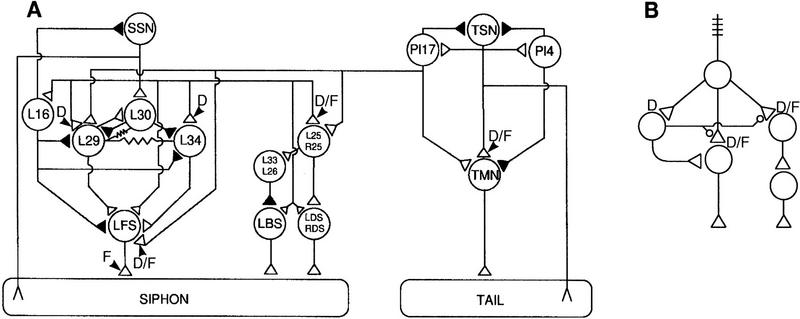Figure 4.
Neuronal connectivity underlying dual-process learning. (A) The neural circuitry mediating siphon-elicited siphon withdrawal as well as tail-elicited tail and siphon withdrawal in Aplysia. (▵) Excitatory synapses; (▴) inhibitory synapses; modulatory synapses are not shown. Key locations of the expression of depression (D) and facilitation (F) are marked on the circuit diagram. Though mentioned only briefly in the text, the interneuron II network that is responsible for respiratory pumping is shown in the center of the figure as a set of four elements. This network can be recruited by sensory input to contribute to the withdrawal reflex; the plasticity of this recruitment contributes to behavioral plasticity (Eberly and Pinsker 1984; Frost et al. 1988). (SSN) Siphon sensory neurons; (TMN) tail motoneurons; (TSN) tail sensory neurons. (B) Simplified schematic of circuit mediating siphon withdrawal, including putative projections of modulatory neurons. Facilitatory synapses are shown as open circles. The monosynaptic pathway (shown down the center) and the interneuron II network (shown at right) exhibit both depression and facilitation. The polysynaptic pathway (shown at left) exhibits depression but does not feed back onto itself to cause facilitation of its own input. The basis for ubiquitous depression but differential facilitation, and therefore, differential net learning between the pathways, is evident in the network configuration illustrated here. Downstream expression of facilitation is not illustrated here although it cannot be ruled out. A is adapted, with permission, from Cleary et al. (1995).

